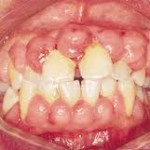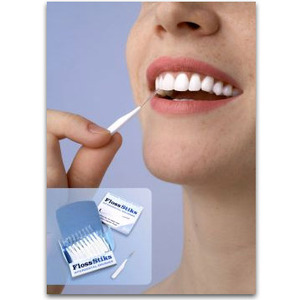Oral pemphigoid (pemphigoid of the mouth) is an uncommon blistering condition which affects primarily the lining of the mouth and gums. Other moist surfaces of the body (known as mucous membranes) can also be affected, and these include the surface layers of the eyes, inside the nose and the genitalia. The skin is less commonly involved but can be affected by a similar blistering condition, known as bullous pemphigoid. Continue reading
Tag Archives: plaque
Types of toothbrushing methods
MANIPULATING THE BRUSH
To cleanse the occlusal surfaces of teeth, the tips of the bristles should be worked into the pits and fissures with enough vibration to loosen and dislodge all debris. Continue reading
Dry Mouth Mouthwash
Dry mouth, also called xerostomia, is a condition that can interfere with everyday activities, such as eating, talking or sleeping. Some common symptoms of dry mouth include:
- Bad breath
- A sticky, dry or sore mouth
- Cracking at the corners of the mouth
- A red and parched mouth
- Blisters and mouth ulcers
- A pebbled look to the tongue
- Difficulty eating dry or spicy foods
- Waking up with a dry mouth at night Continue reading
OraMD
If you’re searching for an OraMD Review or OraMD Reviews – then the chances are you’re trying to get a cure for bad breath and/or gum disorders. It’s no secret that your dentist’s solution (fluoride toothpaste) simply doesn’t work. If it did – you wouldn’t be looking for a review of OraMD. For years we’ve all been completely misled by the toothpaste makers. So – if you’re going to brush your teeth twice a day – better make sure you’re using a natural product that will do the job. Continue reading
Why Are Teeth Sensitive To Cold?
Are you refraining yourself from ice cream, cold drinks, cold air in the mornings when you breathe through your mouth causing a jolt to your teeth and forcing you to stay indoors? Even biting on a candy is causingpressure to your tooth? The answer is simple, you are suffering from sensitive teeth. Wondering how did all this happen? It could be due to various reasons from decay to gum disease. Continue reading
Hall technique part 2
The Hall technique manipulates the plaque’s environment by sealing it into the tooth, separating it from the substrates it
would normally receive from the host’s diet. The plaque may continue to receive some nutrition from pulpal perfusion, but there is good evidence that if caries is effectively sealed from the oral environment, it does not progress. Continue reading
Hormone induced gingival enlargement
 Hormone induced Gingival enlargement
Hormone induced Gingival enlargement
What is gingival enlargement?
Gingival enlargement simply means that there is an increase in the size of your gingival/gums. Continue reading
Recession of gums
Gum recession occurs when your root surfaces are exposed as a result of apical migration of your gum position. The pattern of distribution of your gum recession, whether is localized (affect one or two teeth) or generalized (most teeth) is determined by the etiological factor of gum recession. Studies have shown that gum recession of at least 1mm is present in more than 50 percent of the human population. Continue reading
How to Rinse to Remove Plaque
Tooth brushing is generally effective in removing food debris and plaque on our teeth. However there are certain sites and conditions inside the mouth that could not be cleaned merely by toothbrushing alone. Therefore other plaque removal methods and devices should be utilized other than toothbrushing in our oral hygiene regime, which includes rinsing. Continue reading
How Interdental Brushes Affect Teeth
Supplemental plaque removal measures beyond tooth brushing are necessary in order to thoroughly remove plaque. Although toothbrushing can be effective at removing the plaque residing on sides of teeth, it is generally ineffective for surfaces in between teeth.
There are numerous sites and conditions inside the mouth better served by plaque removal methods and devices other than toothbrushing. Examples of these sites include fixed prostheses, crown margins, in between roots of multi-rooted teeth, orthodontic appliances, the tongue, implants, and dentures. Continue reading


